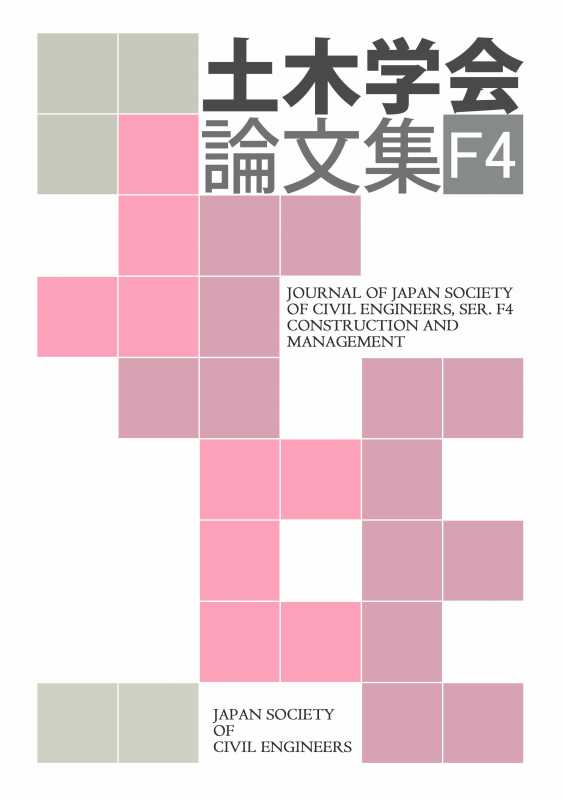Volume 77, Issue 2
Displaying 1-6 of 6 articles from this issue
- |<
- <
- 1
- >
- >|
Special Issue(Paper)
-
2021 Volume 77 Issue 2 Pages I_1-I_15
Published: 2021
Released on J-STAGE: January 27, 2022
Download PDF (3150K) -
2021 Volume 77 Issue 2 Pages I_16-I_29
Published: 2021
Released on J-STAGE: January 27, 2022
Download PDF (3602K) -
2021 Volume 77 Issue 2 Pages I_30-I_41
Published: 2021
Released on J-STAGE: January 27, 2022
Download PDF (1731K) -
2021 Volume 77 Issue 2 Pages I_42-I_56
Published: 2021
Released on J-STAGE: January 27, 2022
Download PDF (1760K) -
ANALYTICAL STUDY OF WORK MOTIVATION STRUCTURE IN CONSTRUCTION ENGINEERS USING EVALUATION GRID METHOD2021 Volume 77 Issue 2 Pages I_57-I_69
Published: 2021
Released on J-STAGE: January 27, 2022
Download PDF (1649K) -
2021 Volume 77 Issue 2 Pages I_70-I_89
Published: 2021
Released on J-STAGE: January 27, 2022
Download PDF (6085K)
- |<
- <
- 1
- >
- >|
